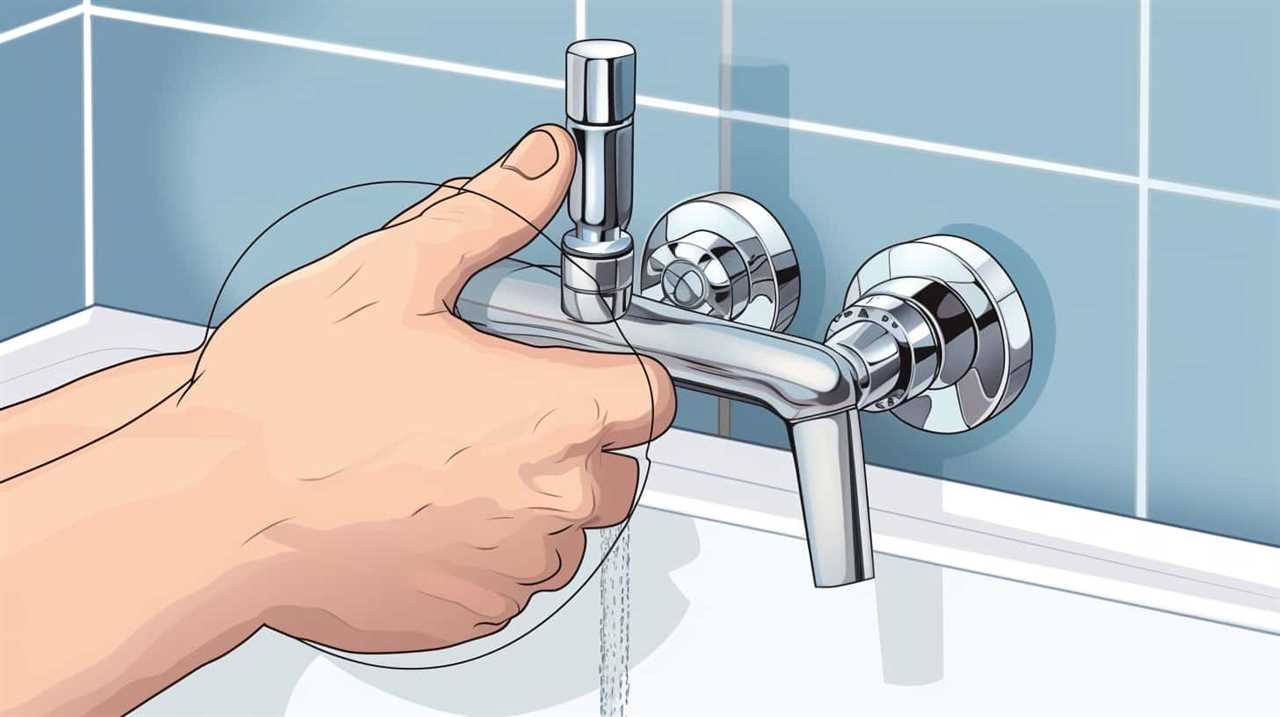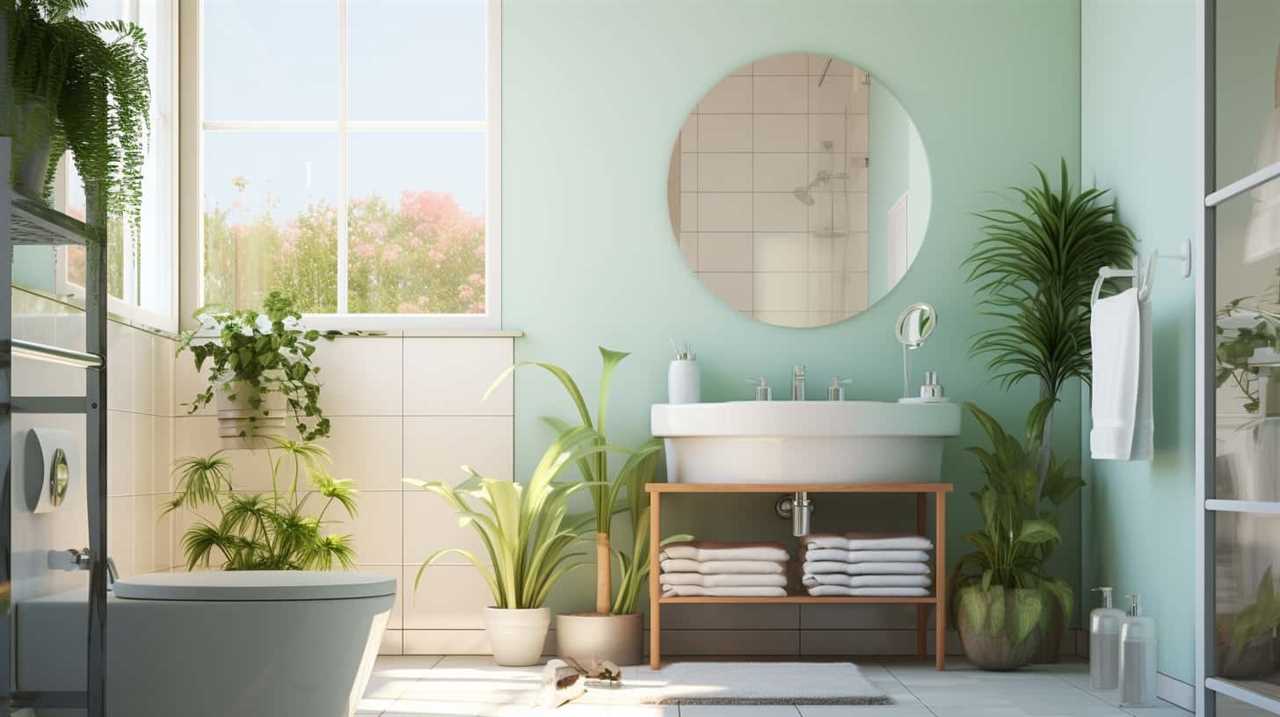Ever thought about how toilets operate?
Well, we’re here to shed some light on the matter. In this article, we’ll delve into the inner workings of toilets, explaining the intricate mechanisms that allow them to function.
From the water pressure and supply to the flushing mechanism and handle, we’ll explore it all.
We’ll even touch on the role of gravity, the importance of the trapway, and the complex network of sewer pipes.

Get ready to master the art of toilet knowledge!
Key Takeaways
- Toilet mechanics involve water pressure and supply, flushing mechanisms, and the role of gravity.
- Water conservation can be achieved through dual-flush toilets, low-flow toilets, and water-saving devices like rainwater harvesting and greywater recycling.
- Toilet hygiene includes cleaning, handwashing, using toilet seat covers, flushing with the lid down, and proper disposal of feminine hygiene products.
- Sanitation and disease prevention are important, and this includes access to toilets, avoiding open defecation, proper sewage disposal, practicing hand hygiene, and vaccination campaigns.
Water Pressure and Supply
To ensure proper flushing, toilets rely on consistent water pressure and a reliable water supply. The water pressure is essential for creating a strong and consistent flow of water that can effectively carry away waste. Without sufficient water pressure, the flushing mechanism may not be able to generate enough force to clear the bowl.
The water supply, on the other hand, ensures that the toilet tank is constantly filled with water, ready for flushing. The plumbing system plays a crucial role in maintaining the water flow and supply to the toilet. It consists of pipes, valves, and fittings that bring water into the toilet and carry waste away.
Now, let’s move on to the next section where we’ll discuss the flushing mechanism and handle.

Flushing Mechanism and Handle
The efficiency of a toilet’s flushing is dependent on the functionality of its flushing mechanism and handle. The flushing mechanism is responsible for releasing water from the tank into the toilet bowl, while the handle activates this mechanism. When the handle is pressed, it lifts a flapper or a valve, allowing water to flow from the tank into the bowl.
It’s crucial to ensure that the flushing mechanism and handle are in good working condition to maintain proper toilet bowl cleanliness. Regular maintenance is essential to prevent issues such as a loose or broken handle, which can lead to incomplete flushes or even toilet malfunctions. Simple maintenance tips, such as checking for any loose parts, cleaning the handle, and ensuring that the flapper or valve is functioning properly, can help ensure a reliable flushing mechanism.
With a well-maintained flushing mechanism and handle, the toilet can effectively remove waste and keep the toilet bowl clean.
Now, let’s move on to discussing the role of gravity in flushing.

Role of Gravity in Flushing
In our toilets, gravity plays a crucial role in the flushing process. When we press the handle, the water in the tank is released into the bowl. Here’s how gravity helps to effectively flush waste:
- Siphoning action:
- As the water rushes into the bowl, it creates a siphoning action.
- This action pulls the waste and water down the trapway and into the sewer system.
- The force of gravity aids in this downward flow, ensuring efficient removal of waste.
- Dual flush toilets:
- Some toilets have a dual flush system that utilizes gravity.
- These toilets have two buttons or handles, providing different water volumes for liquid and solid waste.
- When the appropriate button is pressed, gravity assists in moving the water and waste through the trapway.
Gravity’s role in flushing is essential for the proper functioning of toilets, enabling effective waste removal through siphoning action and facilitating the operation of dual flush toilets.
The Importance of the Trapway
Moving the water and waste through the trapway is vital for the proper functioning of a toilet. The trapway is the pathway that connects the bowl to the sewer pipe, and it plays a crucial role in ensuring that waste is effectively removed from the toilet.
To maintain the functionality of the trapway, regular maintenance is essential. Buildup of debris, such as toilet paper or foreign objects, can obstruct the trapway and lead to clogs and poor flushing performance.

Additionally, modern trapway designs offer several benefits. These designs are often larger in diameter, allowing for improved water flow and preventing clogs. Some may also feature glazed surfaces, which reduce friction and make it easier for waste to slide through.
Transitioning from the trapway, let’s now explore the complex network of sewer pipes.
The Complex Network of Sewer Pipes
After ensuring that waste is effectively removed from the toilet through the trapway, we now delve into the intricate system of sewer pipes. The network of sewer pipes plays a crucial role in the wastewater treatment process, transporting the waste from our toilets to the treatment facilities.
Here are two important aspects to consider when it comes to the complex network of sewer pipes:

- Maintenance:
- Regular inspections and cleaning are essential to prevent blockages and backups.
- Tree roots can infiltrate the pipes, causing damage and blockages, requiring prompt removal.
- Repairs:
- Cracked or collapsed pipes may require repair or replacement to prevent leaks and contamination.
- Corrosion and rust can weaken pipes, necessitating repairs to maintain the integrity of the system.
Understanding the maintenance and repair requirements of the sewer pipe network is crucial in ensuring the efficient flow of wastewater and protecting public health.
Frequently Asked Questions
How Is the Water in the Toilet Bowl Refilled After Flushing?
After flushing, water in the toilet bowl is refilled by a mechanism inside the toilet tank. This mechanism is responsible for regulating the water level and ensuring proper toilet bowl cleaning. Regular toilet tank maintenance is necessary for optimal functioning.
Can I Adjust the Water Level in the Toilet Tank?
Yes, we can adjust the water level in the toilet tank. It is an important part of toilet tank maintenance. By adjusting the float or fill valve, we can control the water level for optimal flushing.
What Happens if the Flushing Mechanism Gets Stuck?
If the flushing mechanism gets stuck, it can cause a major headache. Troubleshooting toilet flushing involves checking the handle, chain, and flapper for any issues. Don’t panic, though. We’ve got you covered.

How Does the Toilet Prevent Backflow of Sewage Into the Bowl?
Toilet backflow prevention is achieved through the use of a refill mechanism in the toilet bowl. This mechanism ensures that the bowl is always filled with water, creating a seal that prevents sewage from flowing back into the bowl.
How Often Should the Trapway Be Cleaned or Maintained?
We should clean and maintain the trapway of a toilet regularly to prevent clogs and ensure proper functioning. The cleaning frequency and maintenance requirements may vary depending on usage and specific toilet model.
Conclusion
In conclusion, toilets work by utilizing water pressure and supply to flush waste through a complex network of sewer pipes. The flushing mechanism, operated by a handle, releases water from the tank to create a forceful flow that removes waste. Gravity plays a crucial role in this process, ensuring that waste is effectively carried away.
The trapway, a curved passage in the toilet, prevents odors and gases from entering the bathroom. For example, in a hypothetical case, a malfunctioning trapway could lead to unpleasant odors in the bathroom, highlighting the importance of its proper functioning.











